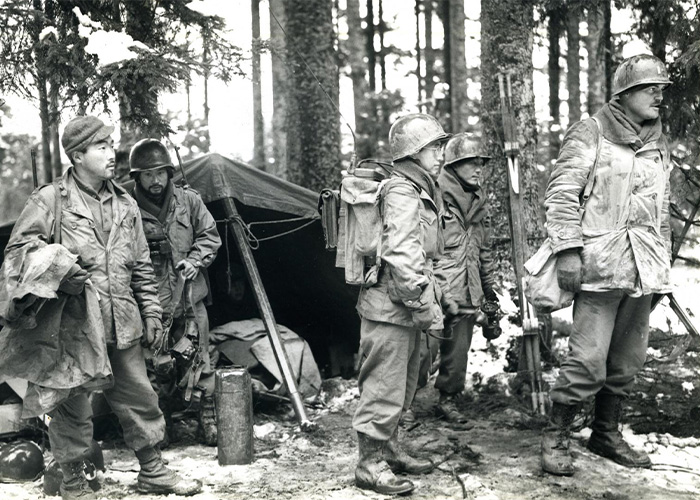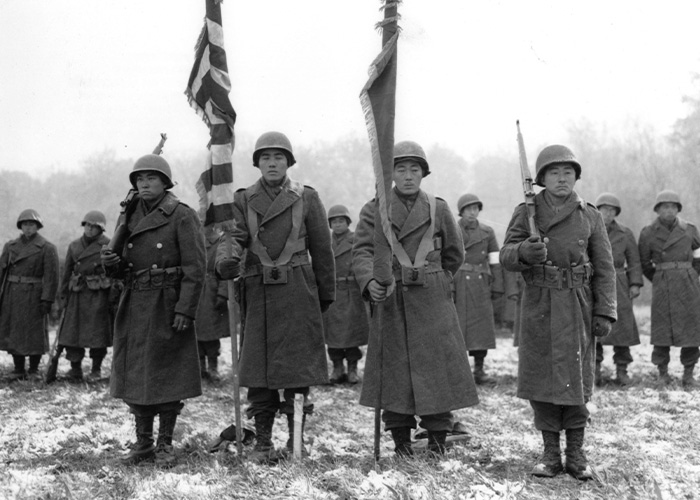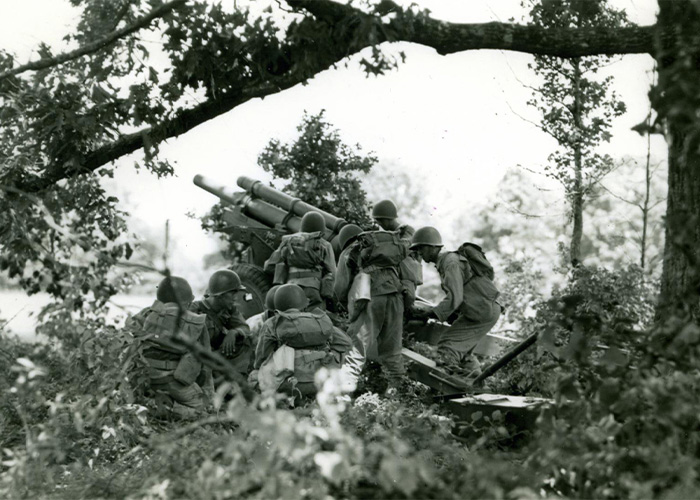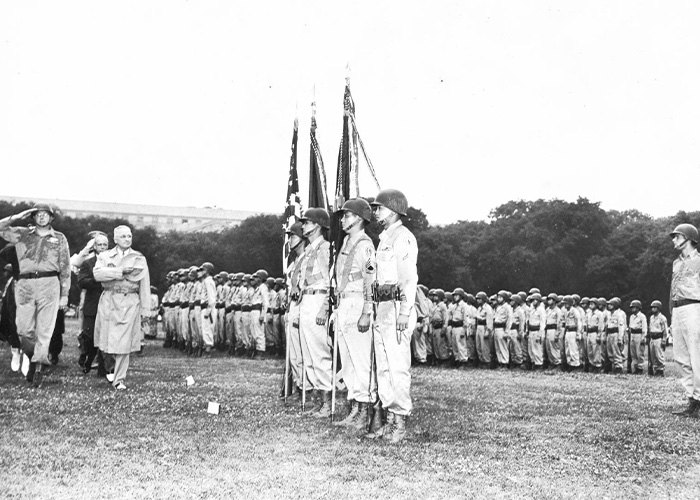442nd Regimental Combat Team (RCT)
Iolani Palace , Honolulu, Hawaii, March 28, 1943: Thousands gathered on March 28, 1943 to bid the 442nd RCT farewell as they left for Camp Shelby, MS. (Photo: Honolulu Star Bulletin)
The 442nd Regimental Combat Team (RCT) was formed in February 1943, with 4,500 volunteer Americans of Japanese ancestry (AJAs). Two-thirds were from Hawaii, the rest from the Mainland, where many of their families had been forced out of their homes and relocated to internment camps.
After over a year of intense training at Camp Shelby, Mississippi, the 442nd RCT deployed in May 1944 to combine forces with the 100th Infantry Battalion. Serving with distinction in the war, the 442nd RCT participated in eight major European battle campaigns through May 1945.
In Fall 1944, the unit fought its most famous battle, “The Rescue of the Lost Battalion” in the French Vosges Mountains. After five days of constant fighting, the 442nd suffered more than 400 casualties in order to save 211 soldiers of the 1st Battalion, 141st Regiment who had been cut off and surrounded by the enemy. The Army has designated this rescue as among the top 10 battles in U.S. Army history.

Vosges Forest, France, October, 1944: Fox Company command post on the front lines. (Photo: U.S. Signal Corps)

Bruyeres, France, November 12, 1944: Color Guard of the 442nd RCT at presentation of citations following the famous “Rescue of the Lost Battalion.” (Photo: U.S. Signal Corps)
In March 1945, the 522nd Field Artillery Battalion separated from the 442nd RCT to join the Seventh Army’s push into Germany and liberated a French Army POW camp, at least one sub-camp in the Dachau concentration camp complex and freed thousands of Jews by intercepting the Dachau death march.
The remainder of the 442nd RCT returned to Italy and was assigned to the 92nd Division on the German Gothic Line, where Allied assaults for over five months had failed. On April 5, the 442nd RCT launched what was intend as a decoy attack to help the 5th Army breakthrough the center of the German Gothic Line. Scaling a steep 3,000-foot mountainside in the cover of darkness, the Nisei launched a successful surprise attack at dawn. Not satisfied, they continued to attack and by 14 April what had been ordered as a decoy had broken the western flank of the Gothic Line. On May 2, 1945, the German Army in Italy surrendered.
To this day, the 442nd RCT, for its size and length of service, is the most decorated combat unit in the history of the United States Army.
For more information please visit the Sons & Daughters of the 442nd Regimental Combat Team.

Camp Shelby, Mississippi, 1944: The men of the 522nd Field Artillery Battalion training on a 105mm howitzer. (Photo: U.S. Signal Corps)

Washington, DC. July 15, 1946: President Truman addresses the 442nd RCT and awards the seventh Presidential Unit Citation for outstanding accomplishments in combat in the vicinty of Seravezza, Carrara, and Fosdinovo, Italy, from April 5 to April 14, 1945. (Photo: U.S. Signal Corps)